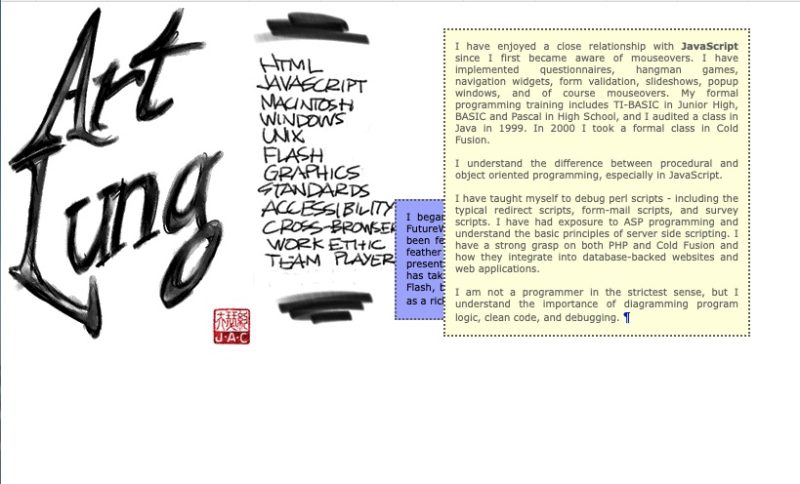When we old heads talk about how the web is much better, I wonder sometimes how it lands on the ears of younger people.
The cliché of a parent saying “I had to walk to school, both ways, in the snow.”
Here’s a datapoint. Here’s a chunk of code:
It’s not great code. I can see optimizations I would make 22 years later. The block of code that uses document.getElementById works fine. document.layers and document.all are no longer “truthy,” as we programmers call it. They don’t exist because the browsers that use them are dead. Goodnight Navigator. Farewell, Internet Explorer. But for rather a long time both Netscape and Microsoft were VERY INTERESTED in having programmers write code that used their vision for how a browser would work because it meant market share. Get programmers to write for THEM, not that other company. Don’t bother writing that code for that other browser. That’s so much work! We have the best browser.
Microsoft was so sure that they could dominate that there was an Internet Explorer for Unix at the same time as their message was that nobody could ever possibly need an operating system other than Windows.
Aside: NCommander is great
As a person who made things for the web, I was obliged, if I cared to have a page work, to know these browser differences.
And the code I wrote? It ran! It looked like this:

And here in 2024, it still runs, because that standard code still runs. document.getElementById works great.
We still have some edges where Safari can do something Firefox can’t do, or Chrome does something Safari can’t do, but we understand they are at the edges. Maybe we can try it out in a beta version of the browser or set a “feature flag” to turn it on. But we can check a site like caniuse.com and see whether I can turn it loose on an audience.
What’s more? These days I could do the same effect now with much less code. By adding the attribute popover to those divs and I could make the same thing happen with no JavaScript at all. And I can check how well I can trust it quickly.
Things were worse in 2002.
Today? The web is better.
The goal is to keep the browser makers honest. Keep on pushing on them. To adhere to standards. To prioritize accessibility. To keep up the fight for privacy and against tracking.
And wherever you put your stuff on the web, KEEP A COPY. My Myspace page still exists, sort of, at myspace dot com / artlung. It’s so terrible I can’t bear to link to it. In the Internet Archive, the way I remember it kind of exists. But it’s no good. Don’t trust Instagram or TikTok or Facebook or X-dot-com to care for your stuff better than you can.
The World Wide Web belongs to YOU. It belongs to ME.
Move on up,
And keep on wishing,
Remember your dream is only a scheme–
So keep on pushin’
And listen to Curtis Mayfield today. I suggest “Move On Up.”

four comments...
You hit the point on the head when you say the page from 2002 still works (it’s html and files and a bit of js that enhances). Take a page written in modern style today and it won’t last more than a handful of years because it’s likely not a page, it’s an application.
The modern web is worse because it is made of opaque applications instead of HTML and text and images. You can’t remix websites today because they aren’t even web sites. And that’s bad.
Hmm. That’s a part of the push I didn’t mention. Use tools that use the good parts of the web. Keep it simple. I wonder if anyone has made the comparison between the React of today and the Flash of yesterday.
GREAT post, man. Just great. One of, if not the best post I’ve read of yours (so far) heheheh
Thanks Jake!